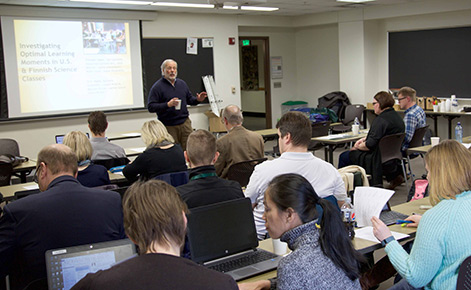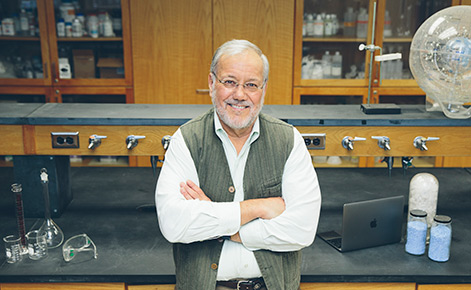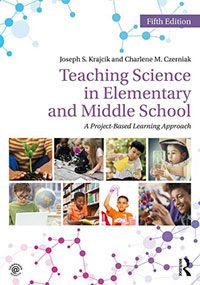Michigan State University Professor Joseph Krajcik has been elected to the National Academy of Education, an honor reserved for the nation’s most outstanding scholars in education.
Krajcik, Lappan-Phillips Professor of Science Education and director of the CREATE for STEM Institute at Michigan State University, was among 16 new members announced in 2019.
Krajcik came to MSU in 2011 to launch the CREATE for STEM Institute. He is noted for his expertise in developing science curriculum, promoting project-based learning and ensuring every student develops—and retains—a spark of curiosity. He has held leadership roles in several national science education organizations, and has produced numerous publications to drive the field forward.
But colleagues, and even Krajcik himself, might best describe him as a teacher.
“I hope to have all students learn science by engaging in doing science they find meaningful and related to their lives,” Krajcik said. “My work aims to inspire all students to bring a sense of wonder about the world in which they live, and to become creative individuals, and smart decision-makers and problem-solvers.”
Krajcik started his career as a high school teacher. After earning his Ph.D., he worked at the University of Maryland and then went to the University of Michigan in 1990, where he remained for 23 years. During that time, he was elected president of NARST (formerly the National Association for Research in Science Teaching) in 1999. He later earned its Distinguished Contributions to Science Education Through Research Award in 2010. He co-led the Instructional Development and Educational Assessment (IDEA) Institute, established in 2007, to recruit talented people who had science-related majors like biology, chemistry or physics and encourage them to become teachers.
In 2009, he was approached by the National Academy of Science to take part in developing the Framework for K-12 Science Education.
Becoming a Spartan
That work, which continued as he joined MSU in 2011, saw Krajcik leading the work on the physical sciences Disciplinary Core Ideas (DCIs) for the Framework, published in 2012.
Krajcik was then asked to be a lead writer for the Next Generation Science Standards. The standards, which focus on DCIs, cross-cutting concepts and scientific and engineering practices, were published in 2013, and are framed as a way to encourage young students to make sense of phenomena, and to learn, and love, science.
“My focus in schools is to create engaging environments for students,” Krajcik said, adding: “NGSS has helped shaped my way of thinking.”
Krajcik’s attention to creative thinking in science education has earned him a host of other accolades.

He received the George G. Mallinson Award from the Michigan Science Teachers Association in 2014 for his contributions to science education. Krajcik served as co-editor of the Journal of Research in Science Teaching beginning in 2010. He grew the CREATE for STEM institute from a handful of individuals to more than 70 affiliated scholars. And he’s authored or co-authored curriculum materials, books, software and more than 100 manuscripts. One of those textbooks, “Teaching Science in Elementary and Middle School: A Project-Based Learning Approach,” (Routledge) was released in its fifth edition in 2018.
“He has an abiding concern for teachers and teaching, students and learning,” said Chris Reimann, director of policy and strategic partnerships for CREATE. “His scholarship is ground-breaking, innovative and highly influential in research and practice.
“He represents the best kind of scholar,” Reimann continued. “His work is highly advanced, and yet is deeply rooted in science classes in every district, every county and every state.”
Krajcik will be formally inducted into the National Academy of Education in November 2019.
Related links
- Science for All: MSU scholars unlock the secrets of science teaching to engage the next generation (New Educator, 2016
- The Future for Science Education (New Educator, 2013)
- Interactions, the ninth grade physical science curriculum developed through the CREATE for STEM Institute, received an NGSS Design Badge in 2018 for its quality and and attention to meeting the Next Generation Science Standards.






